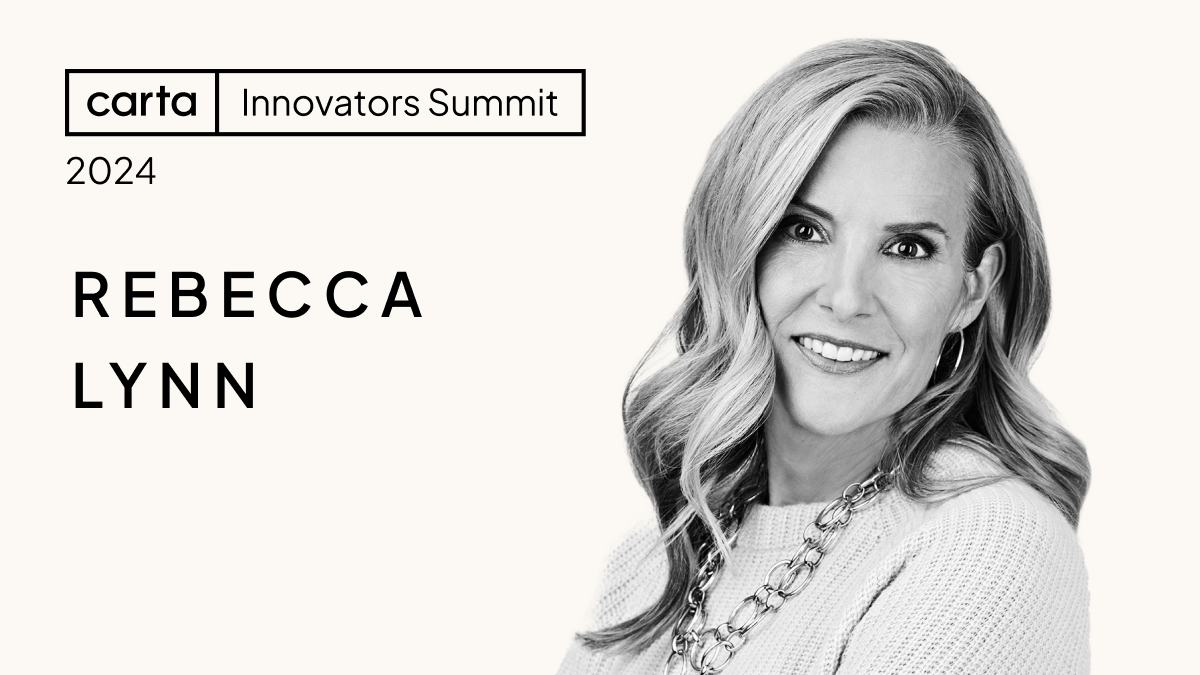Turning early-adopter traction into a sustainable base of mainstream buyers can be challenging. It requires finding true product-market fit and understanding how to reach your ideal customer with targeted marketing—which is exactly what Rebecca Lynn helps Series A and B startups do.
Rebecca is a co-founder and general partner at Canvas Ventures. Named a Woman to Watch: Senior Deal Maker by the Wall Street Journal in 2021 and a Top Woman VC by the New York Times, Rebecca has also been ranked on the Forbes Midas List 5 years in a row. Rebecca has demonstrated early and consistent conviction around fintech, digital health, and consumer products, and works with early-stage founders to refine their product market fit and expand their go-to-market strategy.
Rebecca recently joined Carta’s Innovators Summit for a panel on “Innovative Approaches to GTM” and sat down with Carta for a deep dive on the subject. Among the topics discussed:
-
Understanding product-market fit
-
Finding the right go-to-market strategy
-
Incorporating customer feedback
-
Authenticity in marketing
-
How to work with a limited budget

Carta: Could you share your thoughts on approaching product-market fit, both from your career learnings and as advice for founders?
Rebecca Lynn: A lot of people think they have product-market fit before they really do. There’s a lot of false positives. The product will evolve as you shift from early adopters to mainstream, so you really need to talk to your customers and find out what attracted them to your product and how you can improve it to reach the next stage.
For enterprise, you need to know what the budget is you’re coming out of to understand if you’ve found product-market fit. You’ve found product-market fit when you’re no longer in the R&D or test budget, but part of the core budget.
How do you approach a go-to-market strategy once you’ve found product-market fit?
It really begins with understanding your ideal customer profile. There are so many different marketing channels, so it's about finding channels where your ideal customer is most accessible and within your budget. Then play with your channel mix and try different messaging. Mixed strategies often work best, like coupling mailers with follow-up calls.
How do you advise CEOs on customer engagement to maintain product relevance and improvement?
It's vital for CEOs, especially in early stages, to stay close to their customers. Direct feedback is invaluable as it provides a genuine understanding of customer needs and experiences, which leads to more effective iteration and innovation.
When iterating based on customer feedback, how should companies balance between making changes and maintaining a clear product vision?
When something is truly innovative, you should have a prototype or wireframe to show to get feedback. Otherwise, it’s too hard for them to conceptualize it.
But for existing products, it's about balancing quantitative and qualitative feedback. You probably aren’t going to shift your whole product based on qualitative insights. But they give you a good basis for quantitative testing before making significant changes.
Can you speak about the role of authenticity in marketing, particularly in digital and video content?
Oftentimes people think the most beautiful or produced creative is going to be what works the best. More than often, it's not. Especially when it comes to video. Authenticity almost always outperforms highly polished content.
For instance, our work with Gabi showed that an authentic, less-polished approach resonated more with the audience. People relate to content that feels genuine and real, which is crucial in building trust, especially in fintech products.
Given the current funding climate, what advice do you have for companies with limited resources for their go-to-market strategies?
Leverage free resources like content creation and community. Podcasts and webinars can be very effective. Every dollar spent should be measurable. It's also important to maintain a test budget for experimenting with new channels and messages.
Any final advice or insights you'd like to share with founders as they navigate these strategies?
Stay agile and continuously learn. Keep testing new strategies within a dedicated budget. Also, never assume a strategy is effective just because others use it. Validate everything with your own data and customer insights.